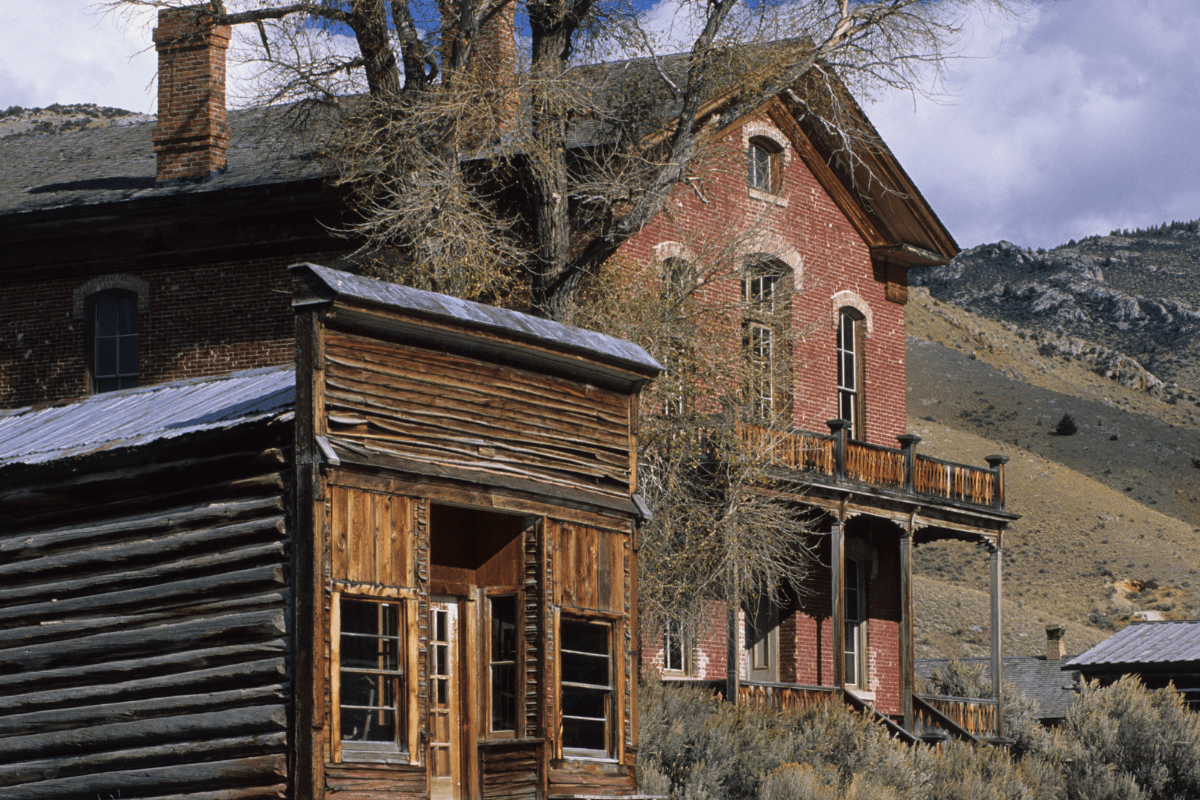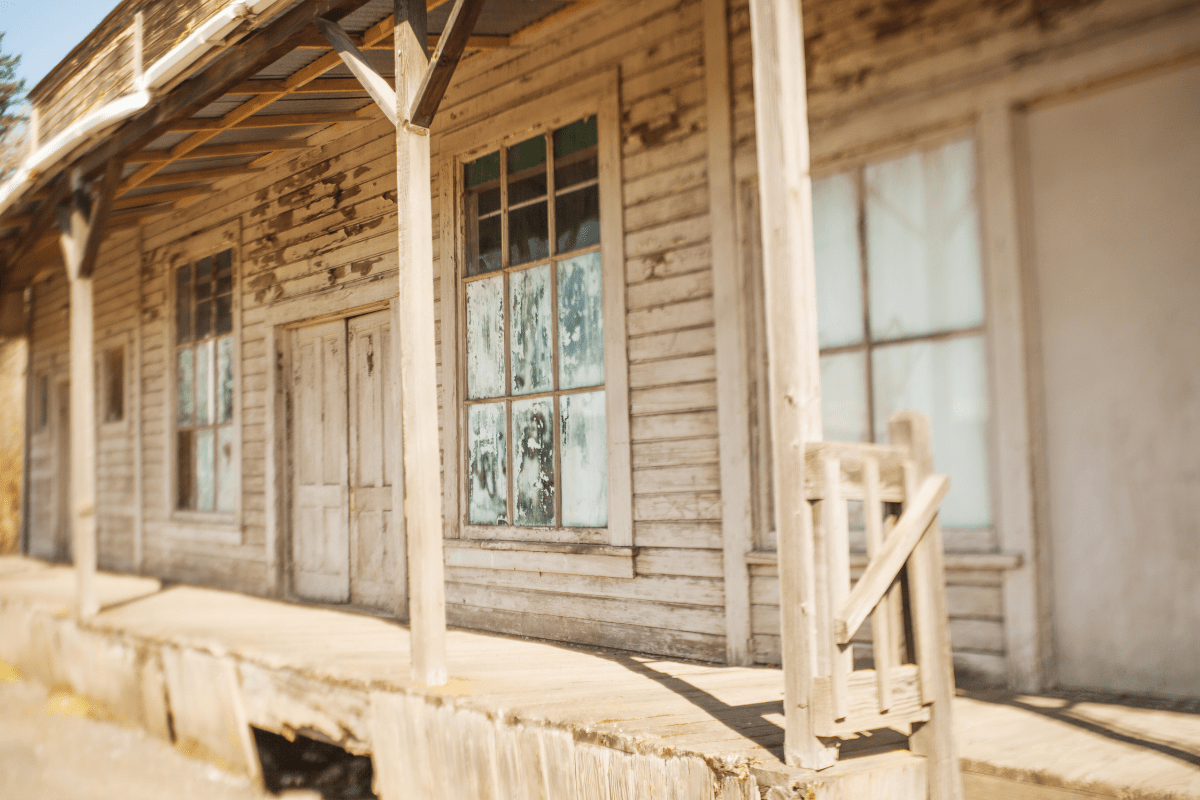Montana's historic sites read like a greatest hits album of Wild West drama, complete with gold rush fever dreams, legendary last stands, and enough ghost towns to fill a supernatural reality show. These preserved pieces of frontier history draw over 12 million visitors annually who pump nearly $5.5 billion into the state economy while discovering that yes, the Old West really was as wild as Hollywood promised… just with worse dental care.
Sacred battlefields preserve Native American heritage
Montana's Native American historic sites offer something Hollywood westerns rarely showed: the other side of the story. These sacred grounds honor indigenous peoples who called this land home for millennia before anyone dreamed of manifest destiny or gold strikes.
Little Bighorn stands as America's most famous battlefield
The Little Bighorn Battlefield National Monument near Crow Agency commemorates the 1876 battle where Lt. Col. George Armstrong Custer learned that perhaps splitting your forces against a vastly superior enemy wasn't the tactical genius move he'd imagined. The 765-acre site preserves the exact battlefield where Lakota and Cheyenne warriors, led by Sitting Bull and Crazy Horse, defeated Custer's 7th Cavalry in what Native Americans call the Battle of the Greasy Grass.
Walking among the 260 white marble markers that indicate where soldiers fell feels eerily intimate. Each marker represents someone's son, husband, or father who woke up that June morning never imagining they'd become part of history's most studied military defeat. The battlefield claimed 263 U.S. soldiers and an estimated 31 Native American warriors, though as Park Ranger Gerald Jasmer notes, this remains "the iconic Indian Wars battle site" that shaped American mythology.
The monument operates Friday through Sunday year-round, with expanded summer hours from 8:00 AM to 5:30 PM. Your twenty-five dollar vehicle admission fee gets you access to the battlefield, though you'll need patience as the main visitor center undergoes renovations through 2025. The 2003 addition of the Indian Memorial, featuring bronze "Spirit Warriors" sculptures, finally gives equal voice to both sides of this pivotal conflict. The adjacent Custer National Cemetery, final resting place for over 5,000 veterans spanning from the Indian Wars through Korea, adds another layer of sobering reflection.
First Peoples Buffalo Jump reveals ancient hunting wisdom
Twenty miles south of Great Falls, First Peoples Buffalo Jump State Park preserves what might be North America's largest buffalo kill site, where Native Americans conducted communal hunts for over 1,000 years. The mile-long sandstone cliff contains buffalo remains stacked up to 18 feet deep, which is simultaneously impressive and slightly disturbing when you think about the sheer volume of prehistoric barbecue that represents.
This wasn't random stampeding… it was sophisticated resource management that would make modern supply chain managers weep with envy. Hunters used precise techniques to guide entire herds over the cliff, ensuring their communities had meat, hides, and materials for the coming seasons. The 6,000-square-foot visitor center operates daily in summer from 8:00 AM to 6:00 PM, with reduced winter hours Wednesday through Sunday. Montana residents with the $9 annual state parks fee enter free, while non-residents pay $8 per vehicle.
Big Hole Battlefield commemorates the Nez Perce flight
Big Hole National Battlefield near Wisdom marks where the U.S. Army attacked the Nez Perce during their desperate 1,170-mile flight toward Canada in 1877. The August 9-10 battle resulted in 60 to 90 Nez Perce deaths, many of them women and children, along with 31 U.S. soldiers killed. Walking the preserved rifle pits and siege areas, you can't help but feel the weight of this tragedy.
The site offers free admission and features four distinct trail areas where you can trace the battle's progression. The annual August 9 commemoration, hosted by the Nez Perce Tribe, transforms this somber battlefield into a place of healing and remembrance. Tipi poles still mark the camp locations, creating an almost haunting connection to that terrible dawn when soldiers attacked sleeping families.
Ghost towns freeze the gold rush era in time
Montana's ghost towns aren't just abandoned buildings… they're three-dimensional history books where you can practically hear the echoes of prospectors arguing over claims and dance hall pianos playing through whiskey-soaked nights.
Bannack State Park: Montana's best-preserved ghost town
Bannack State Park, located 25 miles southwest of Dillon, holds the honor of being both Montana's best-preserved ghost town and the site where the state's gold fever began on July 28, 1862. Within months, the population exploded to over 10,000 souls chasing fortune in Grasshopper Creek, transforming a quiet valley into Montana's first territorial capital from 1864 to 1865.
Today you can explore over 50 original buildings including Hotel Meade, where the wallpaper probably witnessed more scandal than a modern reality TV show, and Skinner's Saloon, where miners traded gold dust for rotgut whiskey. The jail offers a particularly grim view of frontier justice, especially when you spot the gallows where Sheriff Henry Plummer met his controversial end on January 10, 1864, hanged by vigilantes who decided he was secretly leading the gang of road agents he was supposed to be catching.
The park stays open from 8 AM to 9 PM in summer and 8 AM to 5 PM in winter. Montana residents enter free with their state parks vehicle registration, while non-residents pay $8 per vehicle, which honestly feels like stealing considering you're getting an entire ghost town. The third weekend in July brings Bannack Days, when the town springs back to life with living history demonstrations, gold panning, and enough period costumes to make you wonder if time travel is real. October's Ghost Walk tours feature costumed actors portraying the town's most notorious residents, though some visitors swear the real ghosts don't need costumes. Come winter, the frozen dredge pond becomes an ice skating rink complete with a warming house and loaner skates, because apparently even ghosts appreciate good recreational facilities.
Virginia City and Nevada City: Living ghost towns with actual residents
Virginia City and Nevada City, 70 miles from Bozeman along Highway 287, represent Montana's richest placer gold strike and prove that some ghost towns refuse to completely die. The 1863 discovery in Alder Gulch yielded an estimated $100 million in gold at 1860s values… that's about 2.475 million ounces of the shiny stuff pulled from Montana dirt through 1959.
Virginia City served as Montana's second territorial capital from 1865 to 1875 and maintains its living ghost town status with 150 to 300 seasonal residents who apparently enjoy the frontier lifestyle, questionable internet connectivity and all. The Montana Heritage Commission manages nearly 300 historic structures in Virginia City, with almost half built before 1900, making it less "recreation" and more "preservation with people living in it."
Operating from Memorial Day weekend through Labor Day, both towns offer experiences that blur the line between education and entertainment:
- Alder Gulch Railroad rides
- Opera House performances nightly
- Nevada City's music machine collection
- Over 100 relocated buildings
- Original saloons still serving drinks
- Blacksmith demonstrations daily
- Gold panning lessons available
- Period costume photo opportunities
The Virginia City Players at the Opera House claim the title of oldest continuing summer theater west of the Mississippi, performing melodramas that somehow make terrible acting into an art form. Nevada City houses one of the world's largest publicly accessible music machine collections, because apparently our ancestors really, really liked automated entertainment.
Garnet Ghost Town offers authentic desolation
Garnet Ghost Town, 30 miles east of Missoula and accessible via 11 miles of mountain road from Highway 200, delivers the most authentic ghost town experience in Montana. No gift shops, no melodramas, no ice cream parlors… just 30 original structures from the 1890s slowly surrendering to time and Montana winters.
The Bureau of Land Management maintains the site with minimal intervention, charging just $3 admission to wander through furnished buildings like Kelly's Saloon and the J.K. Wells Hotel. At 6,000 feet elevation, Garnet feels properly remote and slightly spooky, especially when winter fog rolls through the abandoned streets.
From December through April, the truly adventurous can rent primitive cabins accessible only by snowmobile or cross-country skis. These cabins offer wood stoves, propane lights, and the kind of isolation that makes you understand why frontier folks talked to their horses so much.
Military forts and trading posts shaped Montana's development
Before Amazon Prime and interstate highways, Montana's military forts and trading posts served as the frontier's combination of Walmart, community center, and occasionally, the last place you'd see before things went terribly wrong.
Fort Union Trading Post National Historic Site, straddling the Montana-North Dakota border, preserves the reconstructed remains of the Upper Missouri River's most important fur trading post from 1828 to 1867. The fort annually traded over 25,000 buffalo robes and $100,000 in merchandise, maintaining mostly peaceful relations with Assiniboine, Crow, Cree, and other Northern Plains tribes through the revolutionary strategy of actually treating them as trading partners rather than obstacles.
The partially reconstructed fort offers free admission year-round, with the Bourgeois House visitor center featuring exhibits that explain how beaver hats in London fashion shows directly impacted Montana's ecosystem. Living history demonstrations include blacksmithing and barrel-making, skills that were essentially the IT certifications of the 1800s. The annual Fort Union Rendezvous on the third weekend in June recreates the trading post's glory days, minus the dysentery and questionable hygiene.
Grant-Kohrs Ranch National Historic Site near Deer Lodge tells the story of Montana's cattle empire through the preserved ranch that Conrad Kohrs transformed from Johnny Grant's 1862 operation into a 10-million-acre cattle empire spanning four states and Canada. The site maintains 90 original buildings from the 1860s-1900s on 1,618 acres of working ranch land, complete with actual cattle who seem unbothered by their role as historical reenactors.
Free admission includes guided tours of the ranch house, where Victorian furnishings suggest that frontier cattle barons lived considerably better than Hollywood westerns implied. The ranch operates from 9:00 AM to 5:30 PM in summer and 9:00 AM to 4:30 PM from September through May, offering wagon rides and demonstrations of traditional ranching techniques that make you appreciate modern technology and veterinary science.
Planning your Montana history road trip
Visiting Montana's historic sites requires strategic planning unless you enjoy driving hundreds of miles between destinations while your passengers develop new and creative complaints about the scenery.
Money-saving strategies that actually work
The America the Beautiful Annual Pass at $80 provides access to all National Park Service sites, paying for itself after visiting just three or four locations. Montana residents enjoy free admission to state parks with valid identification, one of those rare government perks that actually benefits locals. Shoulder seasons from late April through May and September through early October offer smaller crowds and weather that won't melt your face off or freeze your extremities.
Historic trails connect the sites
The Southwest Montana Historic Circle creates a 5 to 7 day route connecting Little Bighorn Battlefield, Grant-Kohrs Ranch, Big Hole National Battlefield, and Bannack State Park. This route covers approximately 1,000 miles, so pack snacks and download podcasts.
The Vigilante Trail from Butte to West Yellowstone via Highways 41 and 287 follows gold rush routes marked with the mysterious vigilante code 3-7-77, which either represents the dimensions of a grave, a significant date, or possibly just random numbers that sounded intimidating.
The Lewis and Clark National Historic Trail spans 4,900 miles total, with Montana containing more trail miles than any other state because apparently Lewis and Clark really, really liked Montana or possibly just got lost a lot.
Hidden gems worth the detour
While everyone flocks to the famous sites, Montana hides equally fascinating historic locations that see fewer tourists and offer more intimate experiences. St. Ignatius Mission features 58 hand-painted murals from the 1890s depicting Christ's life in extraordinary detail that would make Renaissance artists jealous. Havre Beneath the Streets preserves an entire underground frontier town in tunnels created after a 1904 fire, because apparently the solution to your town burning down is to rebuild it underground like frontier mole people.
The Garden of One Thousand Buddhas near Arlee creates a unique cultural bridge between Native American and Tibetan Buddhist traditions on the Flathead Reservation, proving that Montana's diversity extends beyond "cowboys versus Indians" narratives.
The future of Montana's past
Montana continues investing in preserving its history, with the new Montana Heritage Center set to open December 2, 2025 after a $104 million investment. The 16,000-square-foot Montana Homeland Gallery will tell 14,000 years of Montana history through partnerships with tribal stakeholders, finally giving indigenous voices equal billing in the state's story.
Annual events bring these sites to vibrant life throughout the year. Bannack Days in July features gold panning and stagecoach rides for folks who want to experience frontier life without the cholera. Big Hole National Battlefield's August 9 commemoration offers profound cultural connections and healing ceremonies. The Montana Dinosaur Trail connects 14 paleontological sites statewide, with public dig opportunities from June through September for anyone who thinks human history isn't old enough.
The economic impact extends far beyond admission fees. These sites generated $716 million for local economies through National Park Service locations alone in 2023, supporting 48,340 tourism-related jobs. As Kara Grau from the Institute for Tourism and Recreation Research notes, travelers increasingly seek "locally sourced experiences," preferring historical tours and authentic cultural encounters over generic tourist traps.
Whether you're standing where Custer made his last tactical error, panning for gold in Bannack's streams, or skating on a frozen pond in a ghost town, Montana's historic sites offer more than photo opportunities. They provide tangible connections to the triumphs, tragedies, and everyday struggles that shaped the American West. These preserved places transform visitors into witnesses of history's most dramatic chapters, reminding us that the past isn't really past… it's just waiting patiently in Montana for you to come discover it.





